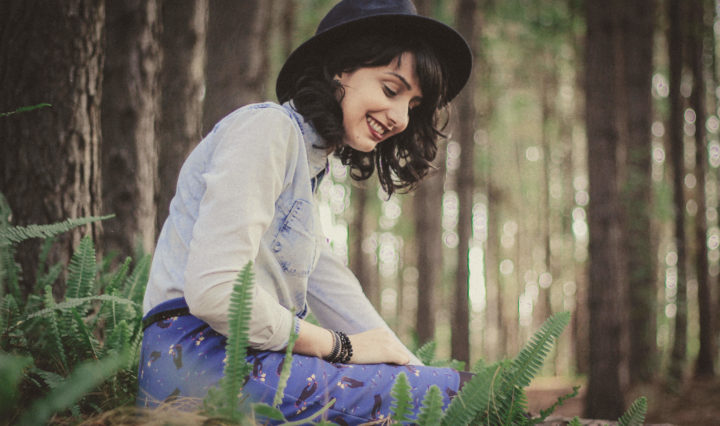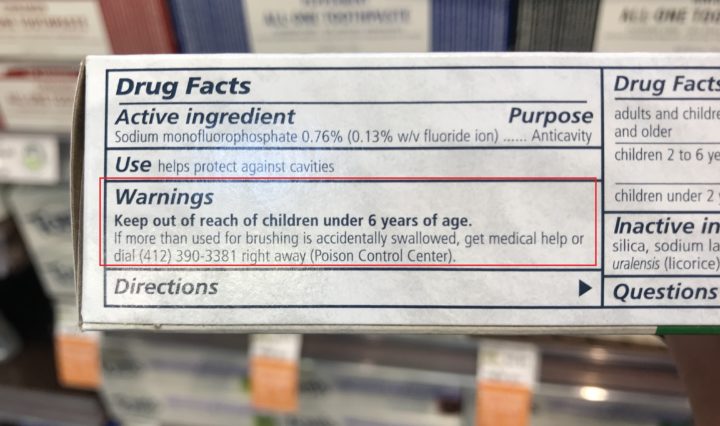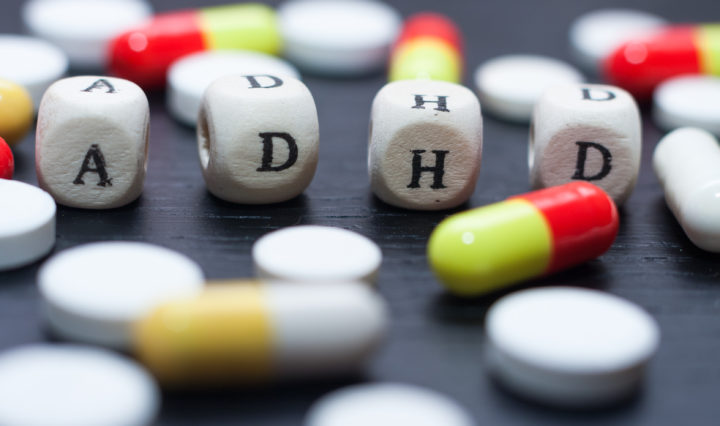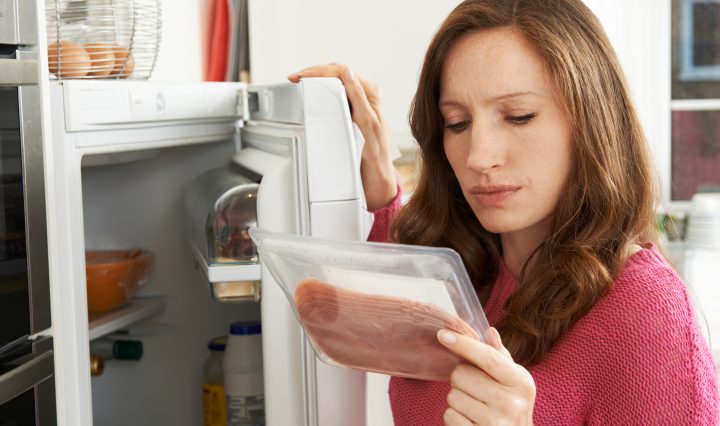Even for a discerning parent, it can be overwhelming trying to find the best, safest products for your family. Even brands that use “natural” and/or “organic” labels, may have an ingredient list that surprises you. Lucky for you, I’ve done the research and hold the highest quality standards. Avoiding toxin exposure is important for everyone to lead a health-promoting lifestyle. However, it’s critically important for children. Children are still developing and therefore are much more susceptible to the harmful effects of some of these chemicals. Autism, ADHD, dyslexia, etc. have all been linked to toxin exposure.[1]
What’s more frightening, however, are the side effects that are mild and undiagnosed but still affect your child’s quality of life. Harvard School of Public Health professor Philippe Grandjean refers to this as a silent epidemic. These side effects include reduced attention span, lower IQ, poor school performance, and delayed development (among others). You can’t clone your child and raise one in a non-toxic environment and one in your current environment. Meaning, what you may think is normal for your child could actually be a side effect of something that could have been prevented. That’s why the rationale “I did it for my kids and they turned out just fine or I had (blank) as a child and I turned out fine” holds ZERO water. You simply cannot know if these things affected you because you do not have a control group. A proper control group is a critical component of finding causal links between events. Anytime you’re evaluating a scientific study, look to make sure there’s a proper, disclosed control group or placebo. Without one, it’s just speculation.
In addition to this is perhaps an even more insidious effect of toxin exposure: the long-term effects on disease outcomes and lifetime cancer risks are negatively impacted from exposure early on in life.[2] This is so scary to me as a parent and is why I choose to take a pro-active stance and protect my family at all lengths possible to the best of my ability. It’s also why I research relentlessly and love every minute of it. It makes me feel empowered and comforted knowing I did everything to the best of my ability at the time. If you haven’t exactly followed the same path, take small steps to implement change and avoid feelings of guilt. We all want what’s best for our children and we do what we can with the information we have at the moment. What’s important is that you care.
From diapers to moisturizer, here is a list of the safest products available and a review of a popular, less safe alternative. The problematic ingredients are highlighted in bold and will usually have the relevant health concern in parenthesis.
Diaper Creams
Best option: Earth Mama Diaper Balm. I can’t say enough about this product and Earth Mama products in general. This works fabulously and is completely non-toxic and 100% organic. I’ve also used this as a moisturizer!
Ingredients: Organic Olive (Olea Europaea) Fruit Oil, Organic Shea (Butyrospermum Parkii) Butter, Organic Beeswax (Cera Flava), Organic Jojoba (Simmondsia Chinensis) Seed Oil, Organic Lavender (Lavandula Angustifolia) Flower Oil, Organic Tea Tree (Melaleuca Alternifolia) Leaf Oil, Organic Calendula (Calendula Officinalis) Flower Extract, Organic St. John’s Wort (Hypericum Perforatum) Extract, Organic Chickweed (Stellaria Media) Extract, Organic Plantain (Plantago Major) Extract.
Product to avoid: Desitin Diaper Rash Cream
Ingredients: Zinc oxide 40% (if using nano-particle zinc oxide it’s known to cause biochemical or cellular level changes, organ system toxicity persistence and bioaccumulation, and cancer), petrolatum (associated with organ system toxicity and could be contaminated with PAHS), cod liver oil, lanolin, talc(is restricted in some countries and is toxic to organs), glycerin, sorbitan sesquioleate, beeswax, tocopheryl acetate (the concern is that it could be contaminated with HYDROQUINONE which has strong evidence that it’s a human skin toxicant/allergen and some evidence that it’s carcinogenic), fragrance.
Hand soap & Shampoo
Best option: Dr. Bronner’s Pure Castile Liquid Soap – Baby Unscented 32oz. I use Dr. Bronner’s for many different things in my household from shampoo and hand soap to household cleaner. It’s pretty much impossible to find a marketed product that’s perfect these days. This is as close as close as it gets and as a bonus, it’s widely available and can be picked up at most grocery stores.
Ingredients: Water, Organic Coconut Oil, Potassium Hydroxide*, Organic Palm Kernel Oil, Organic Olive Oil, Organic Hemp Oil, Organic Jojoba Oil, Citric Acid and Tocopherol (the concern is that it could be contaminated with HYDROQUINONE which has strong evidence that it’s a human skin toxicant/allergen and some evidence that it’s carcinogenic).
*This can cause irritation and organ toxicity. However, while used in Dr. Bronner’s manufacturing process, none remains in the finished product and is therefore not a relevant concern.1
Hand soap product to avoid: Dial Antibacterial Liquid Hand Soap Gold
Ingredients: Triclosan(a well researched, highly-toxic substance that can often times be contaminated with even more toxic substances such as chloroform and dioxins and use is restricted in some countries), Water, Sodium Laureth Sulfate, Cocamidopropyl Betaine (allergen, immunotoxin, contamination concerns), Sodium Chloride, Cocamidopropyl Hydroxysultaine, Glycerin, Fragrance, Polyquaternium-7, PPG-2 Hydroxyethyl Coco/Isostearamide, DMDM Hydantoin (irritant, carcinogen, and often contaminated with formaldehyde), Tetrasodium EDTA, Citric Acid, Yellow 5, Red 4.
Shampoo product to avoid: Johnson & Johnson Tear Free Baby Shampoo
Ingredients: Water, PEG-80 sorbitan laurate (immunotoxicity, allergen, and organ toxin), cocamidopropyl betaine (immunotoxicity, allergen, organ toxin, and contamination concerns), sodium trideceth sulfate, PEG-150 distearate, phenoxyethanol, glycerin, citric acid, fragrance, sodium benzoate, tetrasodium EDTA, polyquaternium-10, ethylhexylglycerin, sodium hydroxide (irritant and organ toxin), potassium acrylates copolymer, yellow 6, yellow 10.
Diaper wipes
Best option: cotton wool & water.
Second best option: WaterWipes
Ingredients: water and grapefruit extract.
Product to avoid: Huggies One&Done
Ingredients: Although advertised as harsh chemical free, there are some ingredients that raise concern (highlighted in bold). Water, Aloe Barbadensis Leaf Extract, Caprylyl Glycol, Malic Acid, Sodium Benzoate (is a fairly common allergen), Sodium Citrate, Tocopheryl Acetate (if produced synthetically it creates the highly toxic byproduct hydroquinone), Polysorbate 20 (production method can create a carcinogen known as 1,4-dioxane), Coco-Betaine, Fragrance (always avoid a product that lists fragrance since many toxic ingredients can hide under this ingredient label), Glycerin, Cucumis Sativus (Cucumber) Fruit Extract, Calendula Officinalis Flower Extract, Camellia Oleifera Leaf Extract, polypropylene, wood pulp.
Diapers
Best option: Organic cloth diapers. It pains me to say that a little bit since cloth diapering is hard! I tried it and admittedly, I switched to a disposable option. So, I’m going to give you the best disposable option as well. The problem with disposables is that they’re still basically plastic. Meaning your child is sitting in phalates, BPA, and other plastic-related toxins all day and/or night. My compromise was to use cloth diapers at night and disposables during the day. My baby doesn’t poop at night and one of these cloth diapers will hold her through until the morning.
Second best option: Babyganics Diapers
Product to avoid: Huggies, Pampers, Kirkland.. you name it.
Harmful ingredients commonly used: Chlorine, Perfume, Dye, and Latex.
Pacifiers
The best option: rubber pacifiers. 100% rubber is just about the only material that poses zero potential health risks. Silicone will be your next best option.
Product to avoid: plastic pacifiers.
Bottles
The best option: Glass. Of course, you may not have the luxury of choosing just which bottle (or pacifier!) your baby decides to favor. The second best option would be silicone.
Product to avoid: Plastic bottles if you’ll be heating them up since they can release harmful chemicals. Yes, even if they say BPA-free.
Sunscreen
As a general rule, it’s best to avoid spray-on sunscreens since the damage from inhalation vastly exceeds the damage from skin exposure.
The best option: Badger Sunscreen Cream for Baby
Ingredients: Non-Nano, Uncoated Zinc Oxide 18.75% (non-nano means the particles are too big for your skin to absorb), *Helianthus Annuus (Sunflower) Seed Oil, *Cera Alba (Beeswax), Tocopherol (Sunflower Vitamin E), *Anthemis Nobilis (Roman Chamomile) Flower Oil, *Calendula Officinalis (Calendula) Flower Extract, *Hippophae Rhamnoides (Seabuckthorn) Fruit Extract
*=Certified Organic
Product to avoid: Banana Boat and Coppertone Kids Sunscreens
Common Ingredients: Homosalate (salicylic acid contamination concerns, organ system toxicity, restricted in some countries), Octinoxate (biochemical or cellular level changes, endocrine disruption, bioaccumulation), Octisalate, Titanium Dioxide (probably human carcinogen when inhaled – avoid spray options with this ingredient), Oxybenzone(Really nasty endocrine disrupter, immunotoxicity, bioaccumulation, developmental and reproductive toxicity, etc.), Water, Isohexadecane, Ozokerite, Cetyl/PEG/PPG 10/1 Dimethicone, PEG 8, C30 38 Olefin/Isopropyl Maleate/MA Copolymer, Glycerin, Sodium Citrate, Sodium Chloride, Aloe Vera (Aloe Barbadensis) Leaf Juice, Tocopheryl Acetate (Vitamin E), Sodium Ascorbyl Phosphate (Vitamin C), Retinyl Acetate (Vitamin A), Dimethicone (organ system toxicity), Phenoxyethanol, Methylparaben, Butylparaben, Ethylparaben, Propylparaben, Isopbutylparaben (parabens found in skin products are man-made and well known endocrine disrupters and probable carcinogens), Disodium EDTA, Alumina (bioaccumulation), Fragrance.
Moisturizer
The best option: Anything food-grade (meaning you could eat it if you wanted to). This would include coconut oil, grape seed oil, jojoba oil, etc.
I like BeautyCounter’s Soothing Baby Oil. Organic ingredients include vitamin E oil, organic coconut oil, jojoba oil, and sunflower oil. That’s it! It doesn’t leave baby feeling greasy like regular coconut oil will do.
Teething
The best option: I found I needed to assemble a team in order to combat the pains of teething and the cranky baby that comes with it. My A-team included: Baltic amber teething necklace, chamomilla homeopathic remedy, and a 100% pure natural rubber teething ring.
If you have additional product suggestions that you’ve found to be clean and effective, please post in the comments. Thanks for checking out my post!
There is a whole range of products not covered here. Test your product’s toxicity rating by visiting the Environmental Working Group’s Skin Deep database.
[1] https://news.harvard.edu/gazette/story/2014/02/toxic-chemicals-linked-to-brain-disorders-in-children/
[2] http://www.ucdmc.ucdavis.edu/publish/news/newsroom/7190
1 https://www.ewg.org/skindeep/product/677326/Dr_Bronners_Fair_Trade_%26_Organic_Hand_and_Body_Shikakai_Pump_Soap_Baby_Unscented/#.Wz5AqYcUeUk
Join our list
Subscribe to our mailing list and get interesting stuff and updates to your email inbox.





It’s hard to come by educatrd people about thius subject, however, youu sound
like you know what you’re talking about! Thanks https://918kiss.party/home/star996
Loving the info on this web site, you have done outstanding job on the posts.
Fine way of explaining, and nice post to obtain data about
my presentation topic, which i am going to present in academy.
Hello, always i used to check web site posts here in the early hours in the morning, for the reason that i love to gain knowledge of more and more.
very interesting details you have observed, appreciate it for putting up.
Thanks for the excellent guide
Thanks, it is very informative
Hi there! This post couldn’t be written any better! Reading through this post reminds me of my previous room mate! He always kept talking about this. I will forward this article to him. Pretty sure he will have a good read. Thank you for sharing!
Hi there, I check your blogs regularly. Your humoristic style is awesome, keep it
up!
I found your website from Google as well as I need to say it was a
wonderful discover. Many thanks!
Have you ever thought about writing an ebook or guest authoring
on other websites? I have a blog based upon on the same topics you discuss
and would love to have you share some stories/information. I know my
subscribers would value your work. If you are even remotely
interested, feel free to send me an e mail.
It’s a pity you don’t have a donate button! I’d without a doubt
donate to this brilliant blog! I guess for now i’ll settle for book-marking and adding your RSS feed to my Google
account. I look forward to brand new updates and will talk about this
blog with my Facebook group. Talk soon!
Hmm is anyone else experiencing problems
with the images on this blog loading? I’m trying to find out if its a
problem on my end or if it’s the blog. Any feedback would be greatly appreciated.
Great points you made there in your article. Thanks for all your help in making a change in the world.